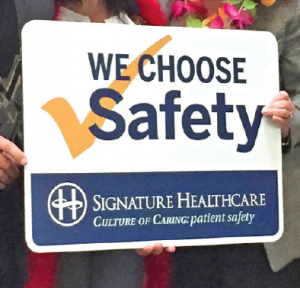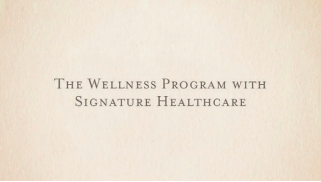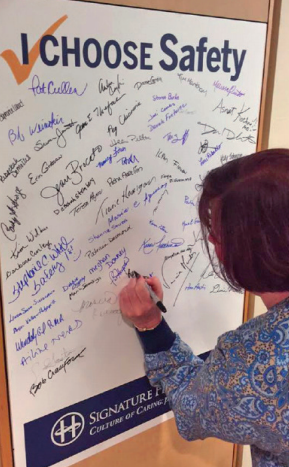
As the healthcare ecosystem continues to evolve, moving from the prevailing fee-for-service model to a risk-sharing model, we should expect the role of hospital marketing departments to go through a similar transformation.
This article originally appeared in Healthcare Marketing Report, Vol. 34, No. 6, June 2016, published by Healthcare Market Report, Inc. All rights reserved.
What does the world of hospital marketing look like when our focus is no longer on driving patient volume but on promoting the health and wellness of specific populations?
It seems evident that service line marketing won’t go away; although it will become far more targeted and driven by digital media, which should come as no surprise to anyone. What I already see happening is the enrichment of the role of the hospital marketing department — an expanded role that requires greater expertise and strategic marketing know how. This shift and expansion in the role of the marketing department is beginning to take place in hospitals across the country as their organizations face new strategic challenges.
One place where I have seen this transformation first hand is Signature Healthcare in Southeastern Massachusetts. As an organization, they are on the leading edge of healthcare transformation — and organizational transformation. This means that Signature’s marketing department has been challenged to keep pace with these changes and venture into the unfamiliar territories of cultural transformation, population health management, care coordination, lean initiatives, quality and patient safety, and employee wellness, to name a few. These initiatives fall well beyond the scope of traditional service line marketing. If you’re not yet experiencing this expansion of the marketing role at your hospital, my prediction is that it’s only a matter of time.
What follows is a brief sketch of some of the initiatives Signature Healthcare’s marketing team has supported in recent months. Some of you may already be experiencing a similar transformation while others of you will be looking at your future as you read through the next few paragraphs.
CARE COORDINATION INITIATIVE
How many care coordination initiatives are currently in place within your organization? Most of us have no idea. Yet care coordination is one of the hallmarks of population health management. We’re entering a world where patient care coordinators, navigators, care teams and health coaches play an essential role in reducing hospital admissions and readmissions and proactively addressing health issues before they become chronic. Signature Healthcare charged its marketing team with conducting an audit of its many care coordination programs to be followed by the development of brand and communication strategies — addressing both internal and external audiences. The truth is that these niche care coordination initiatives seem to just spring into being with very little fanfare or promotion. They also tend to be highly targeted in terms of the audiences they serve.
Often good communication requires finding the middle ground where individuals or departments can connect and share. This was certainly the case with the more than 20 distinct care coordination initiatives operating within Signature Healthcare. As an integrated healthcare delivery network, finding the “communications middle ground” between the hospital-based entity and ambulatory sites can be difficult given different operational systems that come into play. The marketing department can be a huge asset by creating that common ground through the development and maintenance of a communications infrastructure. In this case, the marketing team was able to develop a highly targeted internal communications program that would increase awareness of these initiatives within the health system, facilitate communication, and bring together program leaders for collaboration, learning and idea sharing.
EMPLOYEE HEALTH & WELLNESS

One specific population whose health we have a vested interest in maintaining is our employee population. A healthy employee base has been linked to greater job satisfaction, higher employee morale, lower healthcare costs for both employers and employees, and improved patient satisfaction. Studies have repeatedly demonstrated that healthcare workers are less healthy than the general workforce and more likely to be diagnosed with chronic conditions like asthma, depression and obesity. Their healthcare costs are also significantly higher than the general workforce.
Hospitals are beginning to take steps to curb this trend. Many are now adopting and promoting healthy menu items in their cafeterias and bringing farmers markets for employees and visitors alike. After all, hospitals should be a place where healthy behaviors are modeled. Other organizations, like Signature Healthcare, are launching comprehensive employee wellness initiatives designed to improve the health of its employee population while reducing the organization’s healthcare costs.
Signature Healthcare’s marketing department has been essential in developing communication tools (brochures, collateral, blog posts) and content to promote this initiative to the organization’s 2,700+ employees. This internal marketing initiative has included the development of testimonial videos of employees who speak to the ways in which they have benefitted from participating in the program. This type of peer-to-peer communication brings credibility to the marketing effort, making the messaging far more impactful.
PHYSICIAN MARKETING
It has always perplexed me that more hospital marketing departments aren’t involved in referring physician marketing, and physician recruitment and retention efforts. In the world of population health management, being able to attract and retain primary care providers with large patient panels will be paramount. And the need to elicit referrals from area PCPs, including your own, will continue to be important. You will still need to funnel patients to your top specialists. Referring physician marketing is the most direct route — and I would argue that it is also the most cost effective.
The Brockton healthcare market in Southeastern Massachusetts, where Signature Healthcare is based, is highly competitive. 84 percent of the primary care physicians are employed by one of three major groups. The competition to attract and retain PCPs and their respective patient panels has led to an unprecedented level of physician compensation, re-alignments and instability. For Signature Healthcare, a great deal of energy is expended in an effort to attract and retain top physicians in this highly competitive market.
Signature Healthcare’s marketing team has played a significant role in supporting the organization’s physician marketing initiatives (recruitment, retention and referrals). Through their physician campaign, they have worked to elevate, in the minds of the physicians, all of the factors that should be considered when choosing an organization with which to align. Among other things, their hope was to create an esprit de corps within the medical staff and a reputation for being a premier, quality group. The physician campaign, which successfully showcases Signature clinicians though the use of high quality video profiles on a dedicated microsite, has helped the organization achieve that goal.
CULTURAL TRANSFORMATION

To meet the demands of the new healthcare environment, Signature Healthcare’s leadership team recognized the need for cultural transformation within the organization. Changing culture is hard and takes time. Often change processes need well developed support systems (including communication systems) to shepherd employees through successful change.
Two elements that are essential to the cultural transformation at Signature Healthcare include embracing lean principles and adopting a patient safety mindset organization-wide with the aim of improving patient outcomes. The next few paragraphs address both of these initiatives.
MARKETING LEAN
Lean initiatives in healthcare focus on improving the work life of clinicians and hospital staff, process improvement to prevent systemic errors and improve efficiencies, reducing stress levels, and reducing waste so that personnel can devote more of their time to patient care. The ultimate goal of lean healthcare efforts is the measurable improvement in patient outcomes: reduction in preventable errors, quality improvement, better access, shorter waiting times, and a better patient experience.
When lean processes are first implemented by an organization, it is not unusual for employees to feel like they have taken on additional work, rather than a change in the way they do the work. Lean is not something extra; it is the process through which work gets done. The reality is that the internal manifestation and monitoring of lean processes can be challenging for the employees charged with executing them. In that context, “lean” has the potential to become a pejorative and employees can lose site of the end goal — improving patient outcomes and enhancing the patient experience while becoming more efficient and lowering costs.

In order for lean principles to be embraced within an organization, leaders must create an organizational culture that is receptive to lean and that understands the link between lean initiatives and improved patient outcomes. One of the projects Signature Healthcare’s marketing team has taken on over the last year is the development of a communications strategy around the organization’s lean initiative. The goal of the project is to help support the transformation of culture by making the perceptual link between lean and high quality patient care. The marketing department developed messaging and tools to effectively communicate the value of lean processes in supporting the organization’s efforts to constantly improve quality and the patient experience.
PATIENT SAFETY
Hospital errors are the third leading cause of death in the United States. Studies demonstrate that as many as 440,000 Americans die annually from preventable hospital errors. This underscores the point that hospitals need to make patient safety a priority. As part of its cultural transformation, Signature Healthcare has committed itself to creating a culture of safety within the organization. This patient safety initiative is the organization’s number one priority, an essential element of the new organizational culture. To accomplish this goal, Signature Healthcare would need to provide its employees the training, tools and reminders needed to ultimately change their behavior and have this patient safety mindset become ingrained in their daily work life.
Along with all the patient safety training that would take place as part of this initiative, the organization recognized the need for a full-blown internal marketing program that would promote this new culture of safety — keeping it in the foreground. The program would need to be sustained over time and would need to touch employees in a variety of locations across the health system.
In response, the marketing team developed a multifaceted internal communications program to effectively communicate the individual accountability that is essential for the development of a culture where patient safety is the top priority. Employees had to be keenly aware that patient- and employee-safety had to come first at every decision point. Nothing could ever win out over safety.
The patient safety campaign, which featured custom photographs and videos of Signature employees, included launch events at every shift, dozens of poster designs, employee standees, door and wall clings, social media messaging, branded specialty items (napkins, pens, lanyards, wrist bands, notepads) and digital signage. Signature’s Intranet was enriched with interactive patient safety content, allowing employees to share positive patient safety stories that they referred to as “great catches.” Every Monday, two of the great catches that have been submitted by employees are featured in an eblast that goes out to the entire organization.
HAVING A MARKETER AT THE STRATEGY TABLE
In response to the transformation taking place within its own organization, Signature Healthcare’s marketing department has had to be willing to venture into unknown waters. While doing this, they have demonstrated that the value of strategic marketing extends far beyond consumer advertising and service line marketing. Most of the initiatives cited in this article targeted internal audiences and did not involve print ads, TV commercials or radio spots. The value within each of these programs came in the form of sound strategic thinking and execution.
It is my hope that within the new healthcare environment, enlightened hospital leadership will come to see the benefit of engaging marketing professionals in strategic conversations involving physician engagement, patient safety, care coordination, employee wellness and more. As hospitals work to reduce readmissions, improve processes, eliminate preventable systemic errors and improve the patient experience, they should come to see that compelling communication is at the center of any effort to educate and inform brand constituents, and ultimately change behaviors
CONTACT: Dan Dunlop at ddunlop@jenningsco.com 919.929.0225
The original version of this page was published at: http://www.jenningshealthcaremarketing.com/wp-content/uploads/2016/07/4190-June-HMR-article_Dan-Dunlop_7-05_REV.pdf
Hi. We’re Jennings. We’re in Chapel Hill, North Carolina and we live and breathe healthcare marketing. Over the years, we’ve worked with dozens of hospitals and healthcare organizations.
Right now, my team and I are in the trenches dealing with this pandemic. This list of marketing tips comes from what we’re seeing as hospitals and health systems struggle to ...read more
How Lawrence General Hospital Used Research To Help Elevate Its BrandBy Jill McDonald Halsey, APR; Jeff Steblea; and Dan DunlopThis article originally appeared July 7, 2016 in Strategic ...read more
Last week, I participated in a Zoom panel discussion about transitioning from COVID-19 communication to post-pandemic healthcare marketing. How do we prepare for the eventuality that ...read more
Without a doubt, it’s hard to find anything good about this pandemic. Healthcare workers are dying on the front lines; tens of thousands of Americans will lose their lives; businesses ...read more

Ask a Healthcare Lawyer: HIPAA Compliance for Healthcare Marketers
Your FAQs...Answered!